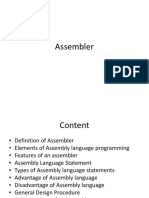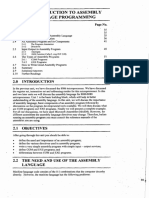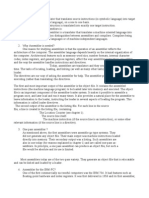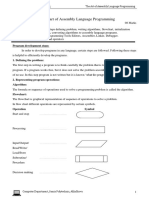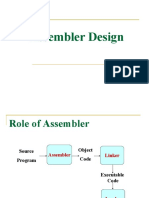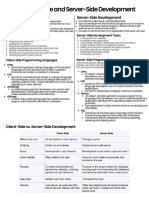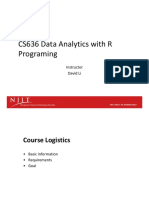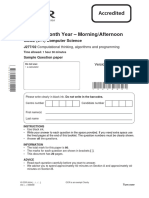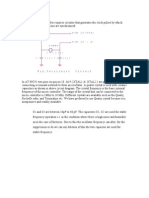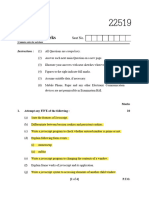0% found this document useful (0 votes)
56 views13 pagesAssembly Language Basics
An assembler converts assembly language code into machine language code by performing two passes. In the first pass, it scans the program and builds a symbol table containing labels and their addresses. In the second pass, it uses the symbol table to evaluate fields and generate the executable machine code, converting mnemonics to machine operations and symbolic operands to addresses. Assemblers make programming at the machine level easier by using symbolic notation rather than binary, but working in assembly requires more time and effort than higher-level languages.
Uploaded by
Abhishek RanjanCopyright
© © All Rights Reserved
We take content rights seriously. If you suspect this is your content, claim it here.
Available Formats
Download as PDF, TXT or read online on Scribd
0% found this document useful (0 votes)
56 views13 pagesAssembly Language Basics
An assembler converts assembly language code into machine language code by performing two passes. In the first pass, it scans the program and builds a symbol table containing labels and their addresses. In the second pass, it uses the symbol table to evaluate fields and generate the executable machine code, converting mnemonics to machine operations and symbolic operands to addresses. Assemblers make programming at the machine level easier by using symbolic notation rather than binary, but working in assembly requires more time and effort than higher-level languages.
Uploaded by
Abhishek RanjanCopyright
© © All Rights Reserved
We take content rights seriously. If you suspect this is your content, claim it here.
Available Formats
Download as PDF, TXT or read online on Scribd
/ 13

